How to optimize data workflows with intelligent automation
Data workflows are essential for businesses to make informed decisions and drive growth. However, these workflows are often time-consuming and repetitive, with a lot of manual tasks involved.
Businesses often spend way too much time on data prep and cleanup, leaving barely any time for strategic analysis that actually moves the needle. While data management tasks are important, they're not the best use of your team's skills and abilities.
Automating data workflows isn't a new concept, but recent advancements in intelligent automation solutions have made it possible to streamline even the most complex processes. You can now automate data extraction, integration, and analysis. It enables your team to focus on high-value activities and deliver meaningful results faster.
In this guide, we'll explore best practices, real-world examples, and powerful tools to help you automate your data workflows and get more out of your data.
What is a data workflow?
A data workflow is a structured process for combining data from various sources and formats into an integrated data set. Its main goal is to provide users with a structured, complete view of data to support confident decision-making across the enterprise.

It often involves the following steps:
- Identifying and collecting data: Collect all the relevant data required for the workflow from different sources.
- Cleansing data: Identify and address data quality issues such as missing data, duplicate records, data with questionable provenance, and records that contain errors.
- Standardization and normalization: Get all the data in the same format, structure, and scale, so it's ready for analysis.
- Data assurance: Create and apply data quality standards to improve data quality, including a remediation process to fix or get rid of any data that's not up to par.
- Data storage: Identify locations to store data sets and select the storage format and tools to facilitate analysis and reporting.
- Data analysis: Use different methodologies, tools, and techniques to analyze the data and extract relevant findings.
Data workflow examples
Using a data integration workflow allows analysts to develop an all-encompassing view of the data, aggregated data from different sources. This further enables the enterprise to make confident, data-driven decisions.

Here are some examples of data workflows in various industries:
- Bringing together customer data from all touchpoints into one super database
- Using automation to extract data from financial docs, contracts, and more for analysis and reporting
- Keeping customer data in sync across CRM, order management, and support systems
- Putting invoice processing, approval, and payment on autopilot
- Keeping tabs on cash flow and whipping up compliance reports
- Combining patient data from EHRs, lab results, and devices to support clinical decisions
- Integrating data from inventory, logistics, and supplier systems
- Automating customer order processing and fulfillment based on real-time inventory data
Why you need to optimize your data workflows
When your data workflows are a mess, it can derail your business plans. Manual tasks, data scattered in silos, and inefficient processes almost always lead to wasted time, expensive mistakes, and missed opportunities.
In contrast, businesses that effectively leverage data and analytics see dramatic benefits. For instance, according to McKinsey's research, companies that extensively use customer analytics are 23 times more likely to outperform competitors in acquiring new customers and retaining existing ones than those that don't. This demonstrates the immense value of data-driven decision-making.
Here’s are some key reasons why optimizing your data workflows is crucial:
- Save time and boost productivity: Automated data workflows take manual tasks and repetitive work off your plate. No more copying and pasting data between systems or hunting down missing info. Your team can focus on the high-impact stuff that drives results.
- Improve data quality and consistency: Efficient data workflows ensure data is captured, cleaned, and standardized at every step. Say goodbye to data entry errors, duplicates, and inconsistencies that can skew your analysis and lead to bad decisions.
- Enable faster, better decision-making: Clean, trustworthy data lets you make informed decisions quickly. Automating data workflows for financial reporting gives you real-time visibility into cash flow, expenses, and profitability. Connecting the dots between CRM, marketing, and support systems helps you understand customers better so you can keep them happy and coming back for more.
- Scale your data operations: As your business grows, so does your data. Optimized data workflows can help you handle bigger volumes and more complexity without breaking a sweat. You'll be able to onboard new data sources, automate more processes, and efficiently support more users.
- Gain a competitive edge: Businesses that can harness their data effectively tend to have an edge over their competitors. Efficient data workflows give you the agility and insights to outmaneuver competitors, jump on opportunities, and delight your customers.
- Free up your team to focus on high-value work: Automating data workflows frees your team to focus on strategic work by reducing manual data tasks. For instance, automating expense report processing could allow your finance team to concentrate on financial planning. While automating data preparation enables analysts to spend more time uncovering insights and recommending actions.
The bottom line? Efficient data workflows are not just a nice-to-have—they're a must for businesses that want to stay agile, competitive, and customer-centric.
To get started, identify your business's most inefficient and error-prone data workflows, such as manual data entry or reconciliation. Then, explore user-friendly, scalable, and secure tools like intelligent document processing and data integration platforms to automate and optimize those workflows. Lastly, involve your team, communicate the benefits, and provide training to ensure successful adoption.
How to streamline your data workflows
Intelligent automation is crucial for dealing with increasing data volume and complexity. Manual processing is just not feasible. We live in a world where an average internet user generates about 1.7 megabytes (MB) of data per second.
It involves combining Optical Character Recognition (OCR), Artificial Intelligence (AI), Machine Learning (ML), Robotic Process Automation (RPA), and integrations so businesses can automate and optimize their data workflows from end to end.
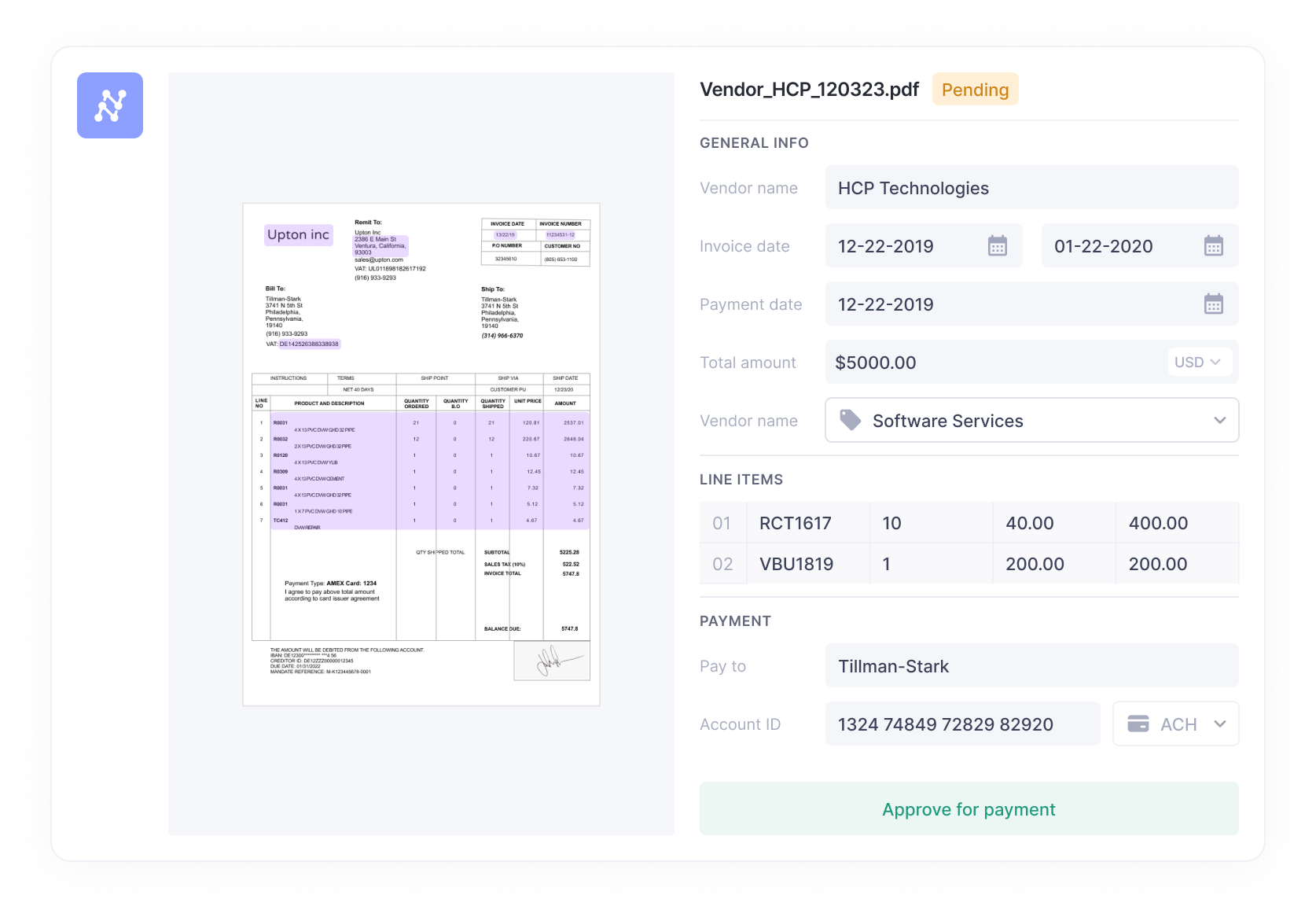
Let's break down these technologies:
- Optical Character Recognition (OCR) converts images of text into machine-readable data
- Artificial Intelligence (AI) and Machine Learning (ML) enable computers to understand, analyze, and learn from data
- Robotic Process Automation (RPA) automates repetitive, rule-based tasks
- Integrations and APIs allow different systems to communicate and exchange data seamlessly
Now, let's dive into how these technologies can streamline each step of your data workflow:
1. Data capture
OCR technology can automatically extract data from scanned documents, images, or PDFs, eliminating the need for manual data entry. You can accurately extract data from structured and unstructured documents – whether it's invoices, customer orders, forms, or receipts.
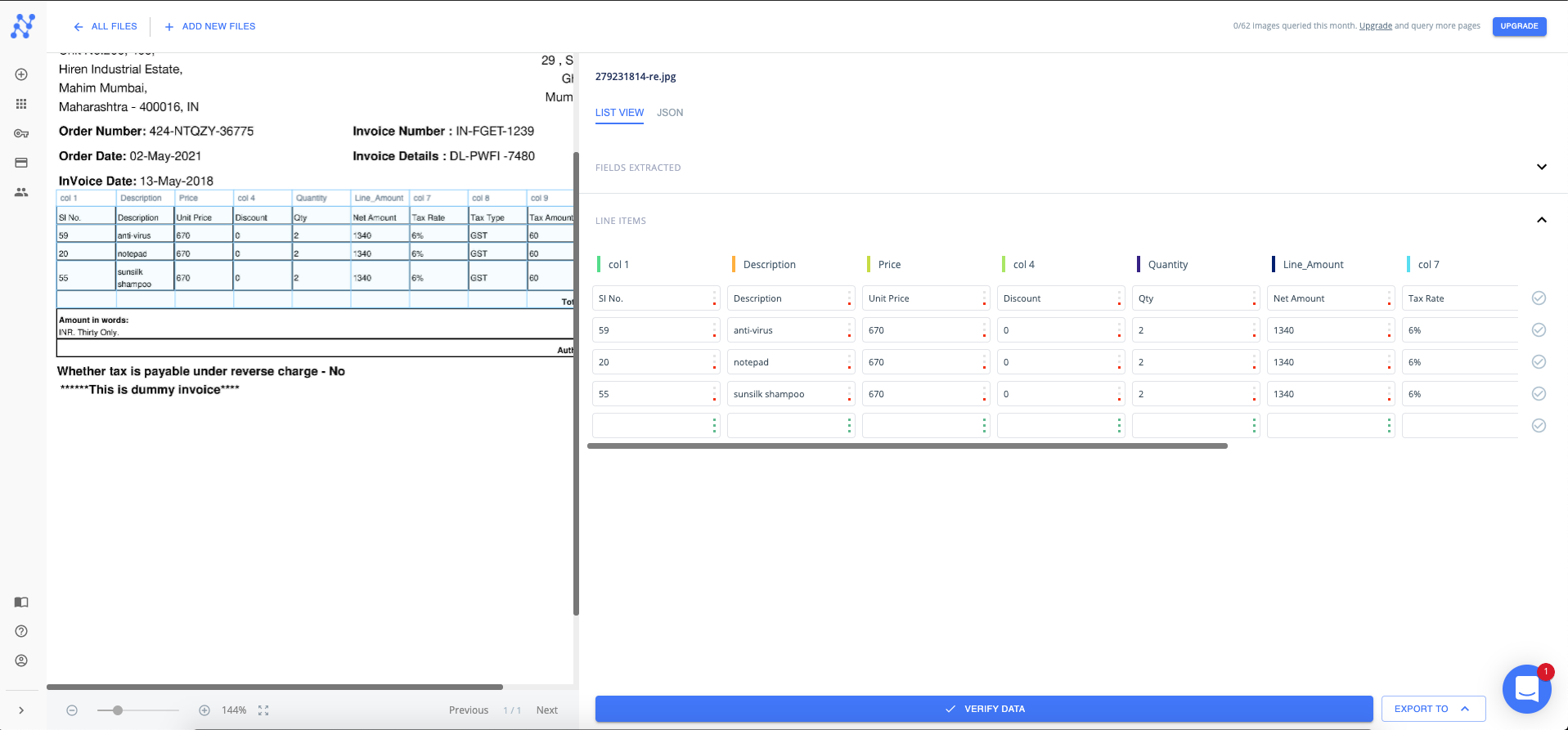
Example: Automatically capture invoice numbers, dates, and totals from supplier invoices.
2. Data classification
AI and ML algorithms can analyze and classify the extracted data based on predefined categories or rules. Automatically classify documents and extract relevant information, such as vendor names, invoice numbers, and amounts easily.
Example: Route documents to the appropriate workflow based on their type, such as invoices to accounts payable and purchase orders to procurement.
3. Data validation
Automated data validation ensures that the extracted data is accurate and complete. You can validate data against predefined rules or external databases, automatically flagging any discrepancies.
Example: Flag invoices with missing or invalid PO numbers discrepancies for manual review. This reduces errors and ensures data integrity.
4. Data enrichment
AI and ML can help enhance the extracted data with extra information from internal or external sources. They can also automatically transform your data by integrating with your existing systems or third-party APIs, giving you a more comprehensive view of your data.

Example: Match supplier names from invoices with vendor records in your ERP system to ensure consistency and accuracy.
5. Data integration
Integrations and APIs let you automatically transfer data between different systems, so you can ditch manual data entry and cut down on errors. Set up seamless integrations with your existing business apps, like ERP, CRM, and accounting software, so you can push or pull data between systems automatically.
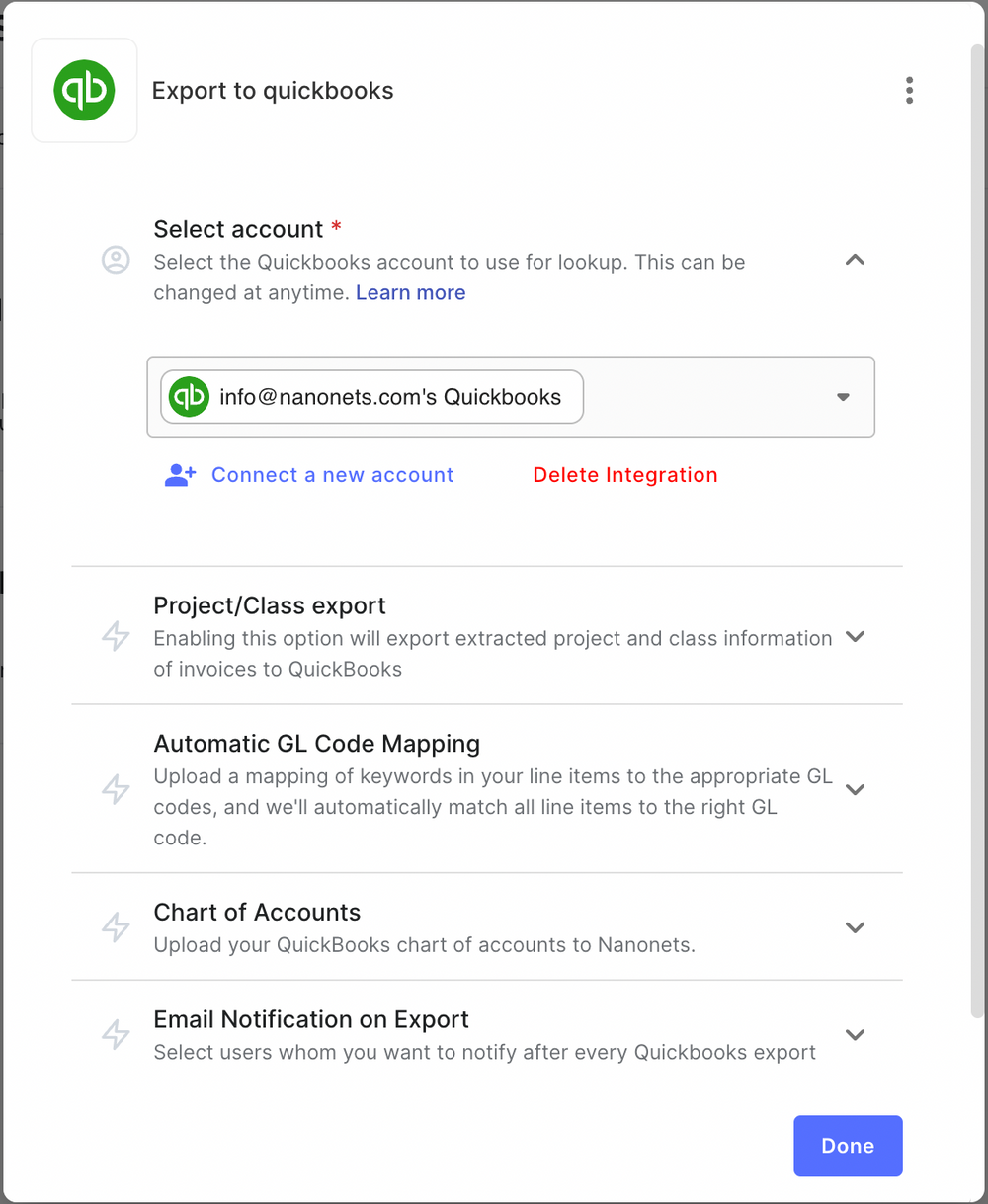
Example: Push extracted and enriched customer data to your CRM system to keep customer records up-to-date and enable personalized marketing campaigns.
6. Data processing
RPA can automate repetitive, rule-based tasks in your data workflow, like formatting, mapping, and entry. Take advantage of flexible, no-code platforms to design and automate your data processing tasks so you can streamline your workflows without needing to be a tech expert.
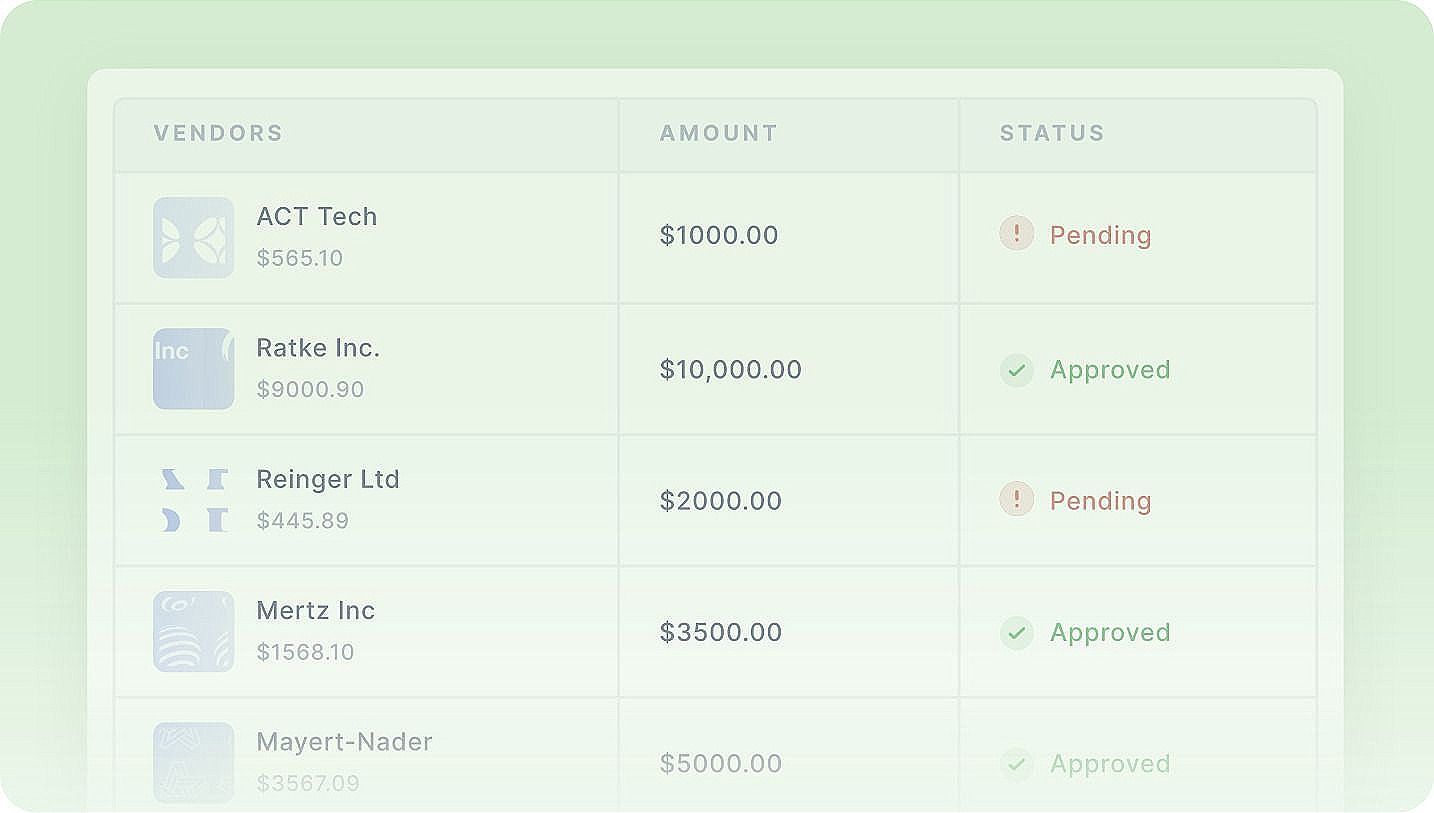
Example: Automatically format extracted data to match your system's requirements, such as converting date formats or mapping data fields.
7. Data analytics
AI and ML can help analyze the processed data to uncover insights, patterns, and trends. Powerful analytics and reporting capabilities offered by these platforms allow you to gain real-time visibility into your data and make informed decisions based on accurate, up-to-date information.

Example: By analyzing invoice data, businesses can identify spending patterns, optimize vendor relationships, and improve cash flow management.
Data workflow automation ideas
Okay, now that you've got a handle on how intelligent automation can streamline your data workflows, the next step is pinpointing specific processes in your businesses that could use a boost from automation.
Here are some ideas to get started:
1. Automate invoice processing from multiple sources
Processing invoices manually can be a tedious and error-prone task. It involves extracting data from invoices and entering it into the accounting system. This can lead to delays in payments and potential financial losses.
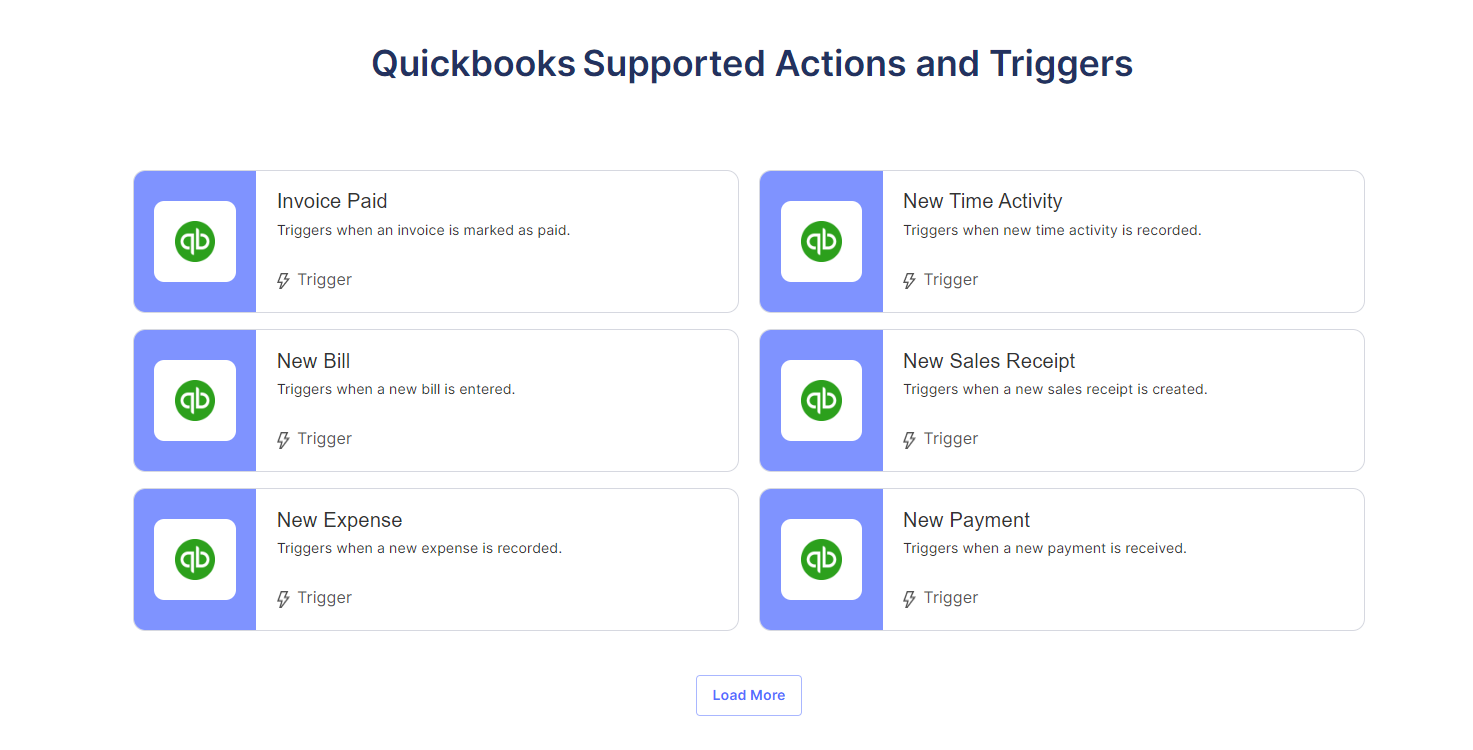
Nanonets' AI-powered invoice processing solution can automate this workflow end-to-end. It can help you:
- Capture invoice data from multiple sources like email, Dropbox, or Google Drive
- Extract critical information like invoice number, date, vendor name, and total amount
- Validate the extracted data against your vendor database and PO numbers and flag any discrepancies for review
- Export the data to your accounting system or ERP for further processing
Workflow suggestion: Integrate Nanonets with your accounting system, such as QuickBooks or Xero. It lets you automatically create a bill in your accounting system when an invoice is processed and approved. It can also sync the vendor details and GL codes, eliminating manual data entry.
2. Streamline expense report processing with receipt capture
Managing employee expense reports can be a time-consuming task for the finance team. They need to collect receipts, verify expenses, and process reimbursements. This manual process is not only inefficient but also prone to errors.

With Nanonets, you can simplify expense management by automating receipt data capture. Here's how it works:
- Employees can email their receipts to a dedicated Nanonets email address or upload them via the mobile app
- Nanonets' pre-trained receipt model extracts critical information like date, merchant name, and amount
- The system categorizes the expenses based on your company's policy and routes them for approval
- Once approved, the expenses are exported to your accounting system for reimbursement
Workflow suggestion: Combine Nanonets' receipt capture with Stripe to automate reimbursement. When an expense report is approved, Nanonets can trigger a Stripe payment to the employee's bank account, ensuring faster reimbursements.
3. Automate customer onboarding with intelligent document processing
Onboarding new customers involves collecting documents like application forms, identity proofs, and contracts. Manually processing these documents can be time-consuming and may lead to data entry errors.
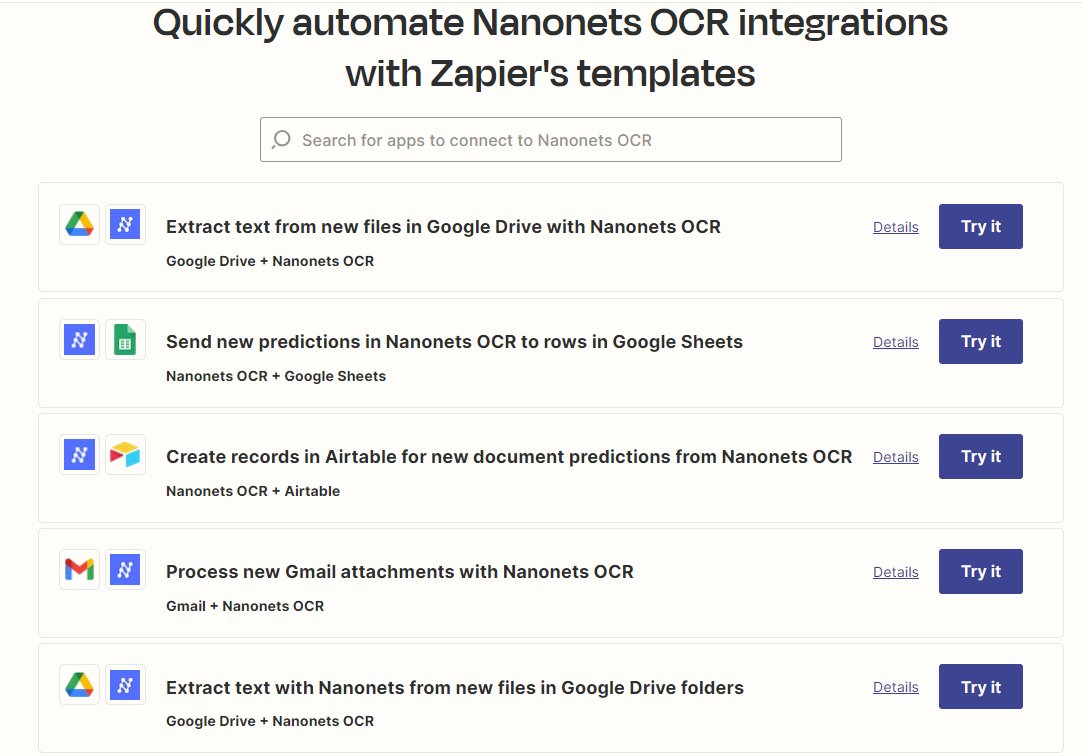
Nanonets' intelligent document processing lets you automate the customer onboarding process. Here's a quick overview of the workflow:
- Customers can submit their documents via email, web forms, or mobile apps
- Nanonets extracts critical information like name, address, and contact details using OCR
- The extracted data is validated against predefined rules and external databases to ensure accuracy
- The verified data is then pushed to your CRM or customer management system via APIs
Workflow suggestion: Use Nanonets' Zapier integration to automate onboarding workflow. When new customers submit their documents, Nanonets can extract the data and trigger actions in your other apps via Zapier. For example, it can create a new customer record in your CRM, send a welcome email, and assign a task to the account manager.
4. Automate ticket routing and prioritization with AI-powered data extraction
In customer support, every minute counts. Routing tickets to the right agent and prioritizing them based on urgency can significantly improve resolution times. However, manually triaging tickets can be time-consuming and prone to errors.

Nanonets can help you automate ticket routing and prioritization. You can set up a workflow where:
- Customers can submit support requests via email, web forms, or customer portals
- Nanonets extracts vital details from the request, such as customer name, product, issue type, and urgency keywords
- Based on the extracted information, Nanonets automatically routes the ticket to the appropriate support queue or agent
- Nanonets can also prioritize the ticket based on predefined rules, such as customer tier, issue severity, or SLA compliance
Workflow suggestion: Integrate Nanonets with Zendesk for personalized ticket routing. When a new support request comes in, Nanonets can extract the customer details and match them with the customer data in Zendesk. Based on the customer's history and preferences, Nanonets can route the ticket to the agent who has previously handled their requests. This personalized routing ensures faster resolution.
5. Optimize data capture and processing for insurance claims
Processing insurance claims involves capturing and validating data from documents like claim forms, medical reports, and police reports.
Here's how the potential workflow would look like with Nanonets:
- Capture data from insurance claim documents using OCR
- Extract essential information like policyholder details, incident details, and claimed amount
- Validate the extracted data against policy terms and conditions
- Export the data to your claims management system for further processing
Workflow suggestion: Use Nanonets to extract data from insurance claim forms and supporting documents automatically. The workflow can validate the extracted data against policy terms and conditions, flag any discrepancies for manual review, and export the validated data to your claims management system for processing and settlement.
These are just a few examples of automating data workflows using Nanonets. Nanonets' powerful OCR engine, no-code workflow builder, and extensive integration capabilities can help you streamline your processes, reduce errors, and boost efficiency across your organization.
Here are some more ways Nanonets can enhance your data workflows:
- Supports multiple languages and can extract data from documents in any language
- Handles both structured and unstructured data, including handwritten text
- Provides pre-built models for common use cases like invoice processing, receipt scanning, and ID verification
- Allows you to train your custom models for specific use cases and document types
- Integrates with a wide range of third-party apps and services through Zapier and API
Final thoughts
While not every step of a data workflow can or should be automated, identifying repetitive, time-consuming tasks is critical to optimizing your process. By leveraging intelligent tools and platforms like Nanonets, you can streamline data capture, validation, enrichment, and integration, saving valuable time and resources. This lets your team focus on what matters most – analyzing insights, making informed decisions, and driving business success.
As data volumes grow, efficiently managing and utilizing data will become increasingly critical. Adopting best practices and embracing automation can set your organization up for success in today's data-driven world. Start small, iterate often, and continuously look for opportunities to optimize your data workflows. The benefits – from increased productivity to better decision-making – are worth the effort.



















































